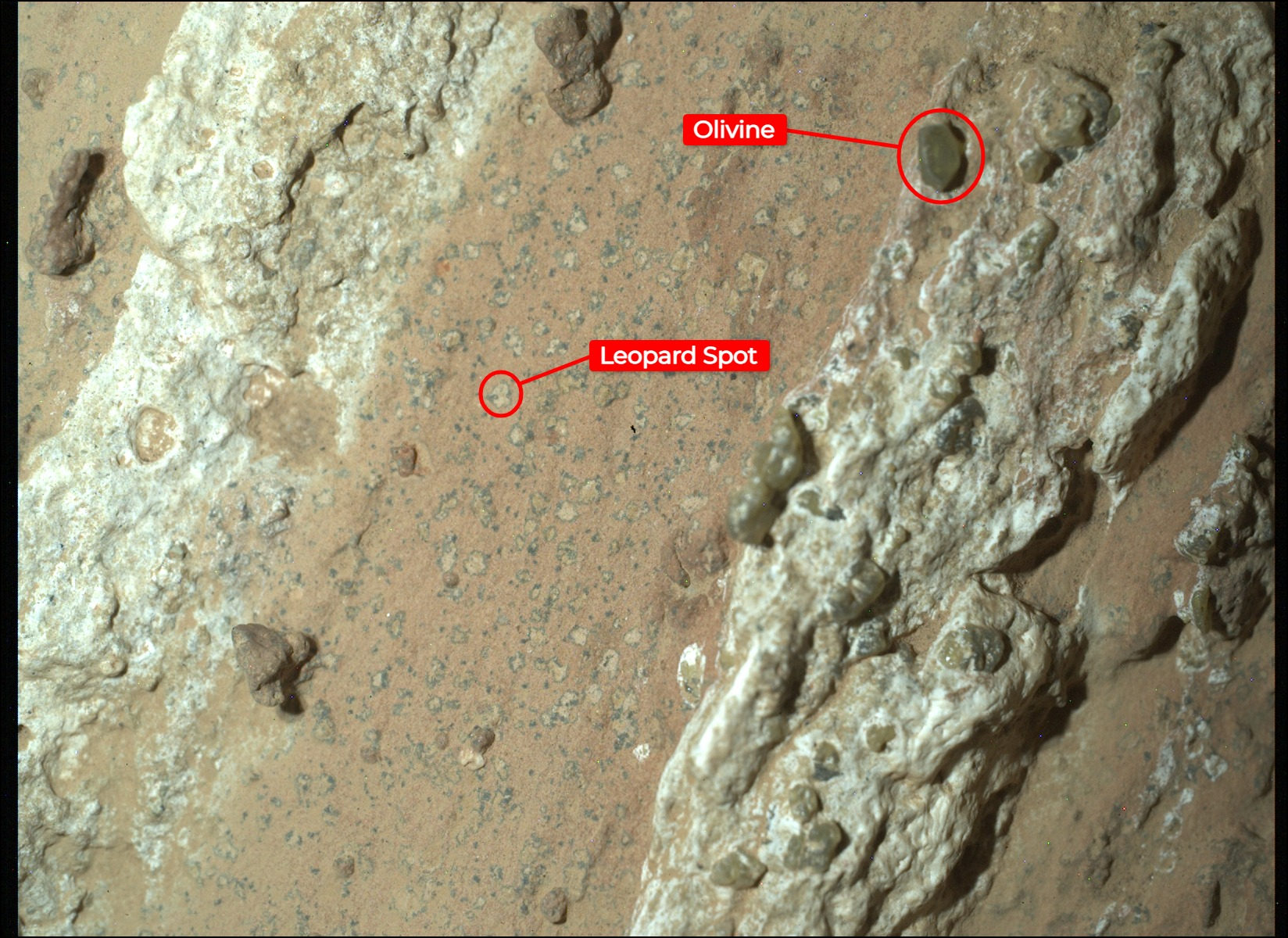Cheyava Falls on:
[Wikipedia]
[Google]
[Amazon]
 Cheyava Falls is a rock discovered on
Cheyava Falls is a rock discovered on
File:Perseverance’s Selfie With ‘Cheyava Falls’ - PIA26344.gif, ''Perseverances selfie with Cheyava Falls
File:E1a-PIA26401-Mastcam-Z-Views-the-Cheyava-Falls-Workspace.jpg, ''Perseverances
 Cheyava Falls is a rock discovered on
Cheyava Falls is a rock discovered on Mars
Mars is the fourth planet from the Sun. It is also known as the "Red Planet", because of its orange-red appearance. Mars is a desert-like rocky planet with a tenuous carbon dioxide () atmosphere. At the average surface level the atmosph ...
by NASA's ''Perseverance
Perseverance most commonly refers to:
* ''Perseverance'' (rover), a planetary rover landed on Mars by NASA
* Psychological resilience
Perseverance may also refer to:
Geography
* Perseverance, Queensland, a locality in Australia
* Perseverance I ...
'' rover during its exploration of the Jezero Crater
Jezero is a Impact crater, crater on Mars in the Syrtis Major quadrangle, about in diameter. Thought to have once been flooded with water, the crater contains a fan-river delta, delta deposit rich in clays. The lake in the crater was present w ...
. This rock, named after a Grand Canyon
The Grand Canyon is a steep-sided canyon carved by the Colorado River in Arizona, United States. The Grand Canyon is long, up to wide and attains a depth of over a mile ().
The canyon and adjacent rim are contained within Grand Canyon Nati ...
waterfall, has drawn significant attention due to its potential as an indicator of ancient life on Mars
The possibility of life on Mars is a subject of interest in astrobiology due to the planet's proximity and similarities to Earth. To date, no conclusive evidence of past or present life has been found on Mars. Cumulative evidence suggests that ...
. The rover's instruments detected organic compounds within the rock, which are essential for all known life. According to NASA, Cheyava Falls "possesses qualities that fit the definition of a possible indicator of ancient life".
"Cheyava Falls" is characterized by large white calcium sulfate
The sulfate or sulphate ion is a polyatomic anion with the empirical formula . Salts, acid derivatives, and peroxides of sulfate are widely used in industry. Sulfates occur widely in everyday life. Sulfates are salts of sulfuric acid and many ...
veins and bands of reddish material, indicative of hematite
Hematite (), also spelled as haematite, is a common iron oxide compound with the formula, Fe2O3 and is widely found in rocks and soils. Hematite crystals belong to the rhombohedral lattice system which is designated the alpha polymorph of . ...
, a mineral that gives Mars its rusty color. The veins are "filled with millimeter-size crystals of olivine
The mineral olivine () is a magnesium iron Silicate minerals, silicate with the chemical formula . It is a type of Nesosilicates, nesosilicate or orthosilicate. The primary component of the Earth's upper mantle (Earth), upper mantle, it is a com ...
". The rock features millimeter-sized off-white splotches surrounded by black material, resembling "leopard spots." These spots contain iron
Iron is a chemical element; it has symbol Fe () and atomic number 26. It is a metal that belongs to the first transition series and group 8 of the periodic table. It is, by mass, the most common element on Earth, forming much of Earth's o ...
and phosphate
Phosphates are the naturally occurring form of the element phosphorus.
In chemistry, a phosphate is an anion, salt, functional group or ester derived from a phosphoric acid. It most commonly means orthophosphate, a derivative of orthop ...
, elements often associated with microbial life
A microorganism, or microbe, is an organism of microscopic scale, microscopic size, which may exist in its unicellular organism, single-celled form or as a Colony (biology)#Microbial colonies, colony of cells. The possible existence of unseen ...
. According to a seven-step scale called Confidence of Life Detection
Confidence of Life Detection Scale (CoLD) or the Ladder of Life Detection is a numerical scale developed by NASA astrobiologists to assess possible biosignatures of extraterrestrial life. It was suggested in 2018. The scale is designed similar to ...
(CoLD) used by NASA astrobiologists, the rock is on Step One, "Detect possible signal".
The rock's composition suggests it was once exposed to water. However, there are alternative, non-biological explanations for its features. The rover has analyzed the rock using various instruments but its team concludes that a definitive understanding will require returning the sample to Earth for more in-depth study.
The "arrowhead-shaped rock" was found at the northern edge of Neretva Vallis area, on July 18, 2024, and is 1 meter by 0.6 meters. On July 21, ''Perseverance'' took a sample of the rock that became its 22nd core sample that can be delivered to Earth by a future mission. The rover made a "selfie" with a rock on July 23.
Gallery
Mastcam-Z
Mastcam-Z is a multispectral, stereoscopic imaging instrument. It serves as the primary science camera on NASA's Perseverance (rover), ''Perseverance'' rover. The Principal Investigator is James F. Bell, III, Jim Bell of Arizona State University. ...
views the "Cheyava Falls" workspace. On the left, a black hole is visible that appeared after sample collection.
File:E2-PIA26369-Perseverance Views a 360-Degree Perspective of Bright Angel.jpg, 360-degree view of a region on Mars called "Bright Angel", where an ancient river flowed billions of years ago. Cheyava Falls is slightly right of center, about 361 feet (110 meters) from the rover.
File:E1b-PIA26370-Mastcam-Z Views Leopard Spots in Perseverances Drill Bit.png, Mastcam-Z Views 'Leopard Spots' in Perseverance's Drill Bit
References
{{Mars 2020 Mars 2020 Rocks on Mars Astrobiology